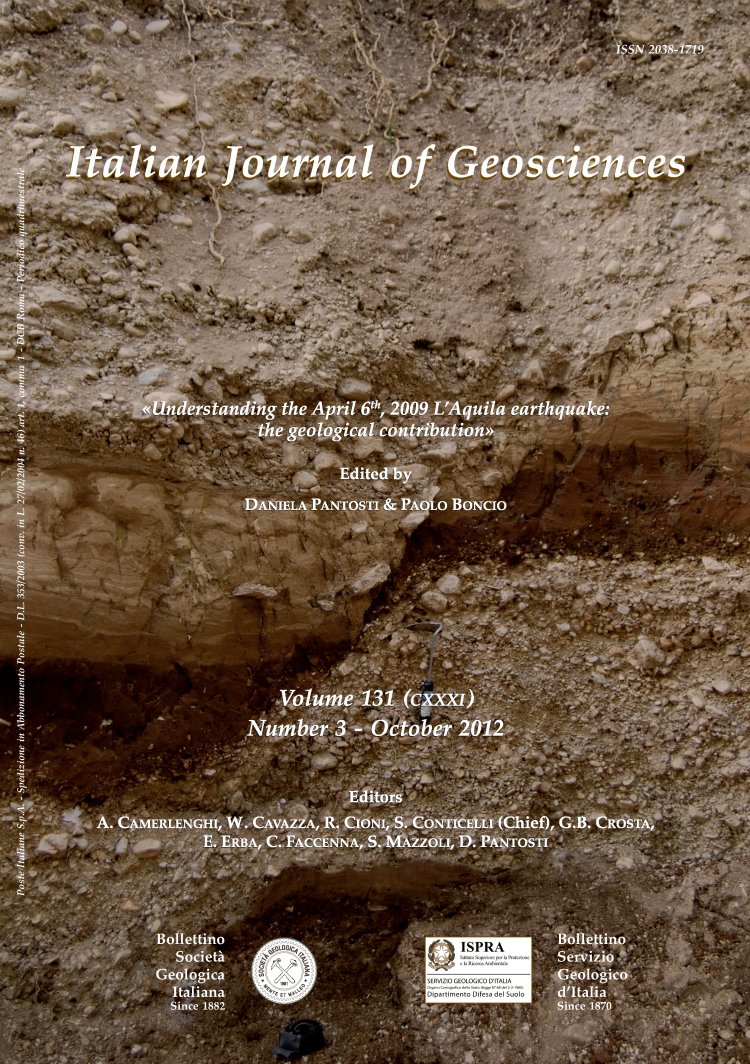
Changes on groundwater flow and hydrochemistry of the Gran Sasso carbonate aquifer after 2009 L'Aquila earthquake
Raffaele Adinolfi Falcone(1), Valentina Carucci(2), Antonella Falgiani(1), Mauro Manetta(2), Barbara Parisse(2), Marco Petitta(3), Sergio Rusi(4), Michele Spizzico(5) & Marco Tallini(2)
(1) INFN - Laboratori Nazionali del Gran Sasso, S.S 17 Bis
Km 18+910, 67010 Assergi (L'Aquila).
(2) Dipartimento di Ingegneria delle Strutture, delle Acque e del Terreno, Università dell'Aquila, Via Giovanni Gronchi, 18 - 67100 L'Aquila.
(3) Dipartimento di Scienze della Terra, Università "La Sapienza" di Roma, P.le Aldo Moro, 5 - 00185 Roma. Corresponding author: Marco Petitta - E-mail: marco.petitta@uniroma1.it
(4) Dipartimento di Ingegneria e Geologia, Università "G. d'Annunzio" di Chieti-Pescara, Via dei Vestini, 31 - 66013 Chieti.
(5) Dipartimento di Ingegneria delle Acque e Chimica, Politecnico di Bari, Via Orabona, 4 - 70125 Bari.
Abstract
Keywords
Get Full Text